Introduction
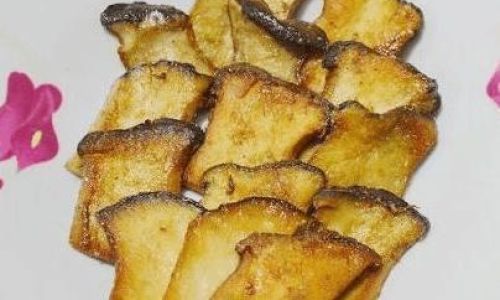
In the realm of culinary arts, mushrooms hold a unique and esteemed position, offering a versatility that transcends both vegetarian and non-vegetarian dishes. Among the myriad varieties, the eringi mushroom, also known as king oyster mushroom, stands out for its meaty texture, rich flavor, and nutritional benefits. One of the most delightful ways to enjoy this culinary gem is through the preparation of dry-fried eringi mushrooms—a dish that brings out the inherent sweetness and umami of the mushroom while creating a delightful crunch on the exterior.
Dry-frying, or stir-frying without the addition of significant amounts of oil or liquid, is a technique that requires precision and patience. It allows the natural juices of the ingredients to caramelize, creating a flavorful glaze that enhances the overall eating experience. In this article, we will delve into the step-by-step process of how to make dry-fried eringi mushrooms, exploring the nuances of ingredient selection, preparation, cooking techniques, and seasoning to achieve the perfect dish.
Section 1: Ingredient Selection and Preparation
1 Choosing the Right Eringi Mushrooms
The first step in creating a successful dish is selecting high-quality ingredients. When it comes to eringi mushrooms, look for firm, plump specimens with smooth, dry caps. Avoid mushrooms that have soft spots, wrinkles, or slimy surfaces, as these are signs of spoilage. Freshness is key; ideally, purchase mushrooms the same day you plan to cook them.
2 Cleaning and Slicing
Before slicing, gently wipe the mushrooms clean with a damp cloth or paper towel. Avoid soaking them in water, as this can make them soggy and dilute their flavor. Once clean, trim off the stems if they are tough or woody. For dry-frying, it’s best to slice the mushrooms into uniform pieces, about 1/4 to 1/2 inch thick. Uniform slicing ensures even cooking and a more appealing presentation.
3 Marinating (Optional)
While not strictly necessary, marinating the sliced mushrooms can add an extra layer of flavor. A simple marinade of soy sauce, rice vinegar, a pinch of sugar, and minced garlic can be mixed together and allowed to sit with the mushrooms for about 15-30 minutes. This step is particularly useful if you want to infuse the mushrooms with additional umami and aromatic notes.
Section 2: Cooking Techniques
1 Preparing the Pan and Heat
Choose a heavy-bottomed skillet or wok for dry-frying. The weight and thickness of the pan distribute heat evenly, preventing hot spots that can burn the mushrooms unevenly. Preheat the pan over medium-high heat until it’s very hot. A drop of water should sizzle and evaporate immediately upon contact with the pan’s surface.
2 The Art of Oil Control
The beauty of dry-frying lies in its minimal use of oil. Start with just a tablespoon or two of neutral-flavored oil, such as canola or grapeseed oil. The goal is to coat the bottom of the pan lightly, not to deep-fry the mushrooms. As the mushrooms cook, their natural moisture will release, creating a small amount of steam and a glaze that further caramelizes.
3 Adding the Mushrooms
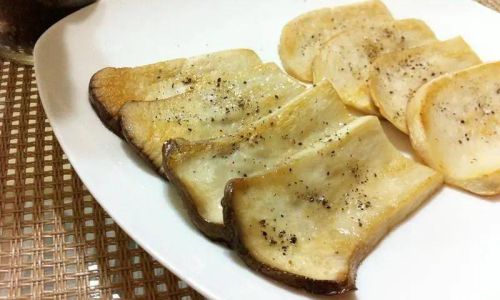
Once the pan is hot and the oil is shimmering, carefully lay the sliced mushrooms in a single layer. Avoid overcrowding the pan, as this will reduce the temperature and steam the mushrooms rather than dry-fry them. If necessary, cook in batches to maintain the high heat and achieve the desired texture.
4 Stir-Frying Technique
Allow the mushrooms to cook undisturbed for about 1-2 minutes on one side. This allows them to develop a golden-brown crust. Then, using tongs or a spatula, flip the mushrooms and stir-fry continuously for another 2-3 minutes, until they are evenly browned and slightly crispy. The stirring action helps to distribute the heat evenly and prevents burning.
5 Adjusting the Heat
As the mushrooms release their moisture, you may need to adjust the heat. If the pan becomes too wet and steamy, increase the heat slightly to evaporate the excess moisture. Conversely, if the mushrooms start to burn, reduce the heat immediately and stir more frequently.
Section 3: Seasoning and Flavor Enhancement
1 Basic Seasoning
Once the mushrooms are golden brown and crispy, it’s time to season. Start with a pinch of salt to enhance the natural flavors. A dash of white pepper can add a subtle heat without overpowering the mushroom’s delicate taste.
2 Adding Aromatics
For an extra layer of flavor, consider adding finely chopped aromatics such as garlic, ginger, or shallots towards the end of cooking. These ingredients should be added quickly and stirred continuously to prevent burning. Their aroma and flavor will meld with the mushrooms, creating a more complex taste profile.
3 Sauce or Glaze (Optional)
For a glossy finish and added depth, you can drizzle a small amount of soy sauce, hoisin sauce, or a mixture of honey and soy sauce over the mushrooms during the final minute of cooking. The heat will help the sauce thicken and coat the mushrooms evenly, creating a delicious glaze.
Section 4: Serving and Garnishing
1 Serving Suggestions
Dry-fried eringi mushrooms can be served as a standalone appetizer, a side dish, or even incorporated into larger dishes like stir-fries or salads. Their meaty texture and rich flavor make them a versatile addition to any meal.

2 Garnishing for Presentation
To elevate the dish visually, consider garnishing with freshly chopped herbs such as parsley, cilantro, or chives. A sprinkle of sesame seeds or a drizzle of chili oil can also add both texture and flavor. For a more sophisticated presentation, arrange the mushrooms on a bed of steamed greens or serve them atop a bed of rice.
Section 5: Troubleshooting and Tips
1 Preventing Soggy Mushrooms
If your mushrooms turn out soggy, it’s likely due to overcooking or too much moisture in the pan. Ensure the pan is hot before adding the mushrooms, and cook in batches to maintain high heat. Stir frequently to evaporate excess moisture.
2 Achieving Even Browning
For even browning, slice the mushrooms uniformly and avoid overcrowding the pan. Stir frequently to ensure all sides are exposed to the heat evenly.
3 Adjusting Seasoning
Taste the mushrooms before serving and adjust the seasoning accordingly. Remember, soy sauce and other condiments can add saltiness, so be cautious when adding additional salt.
Conclusion
Dry-fried eringi mushrooms are a delightful culinary treat that combines simplicity with sophistication. By mastering the art of ingredient selection, precise cooking techniques, and thoughtful seasoning, you can create a dish that is both visually appealing and bursting with flavor. This method not only highlights the inherent qualities of the eringi mushroom but also showcases the beauty of minimalism in cooking. Whether you’re a seasoned chef or a home cook eager to experiment, dry-fried eringi mushrooms offer a rewarding culinary journey that is sure to delight your taste buds and impress your guests.
So, the next time you’re in the kitchen, gather your ingredients, preheat your pan, and embark on the delightful adventure of crafting the perfect plate of dry-fried eringi mushrooms. Happy cooking!

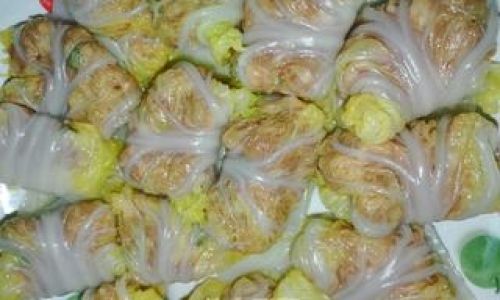
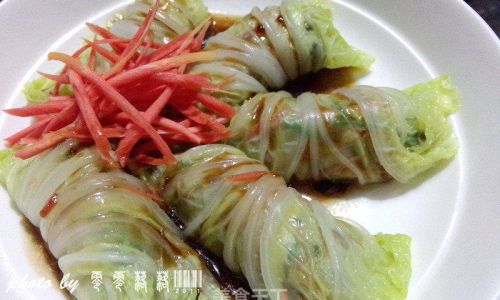
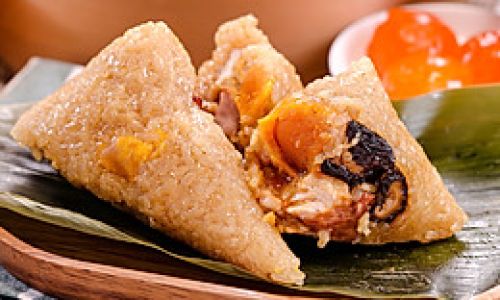
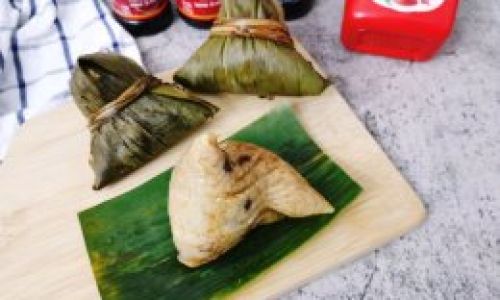
0 comments